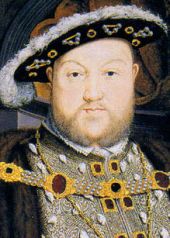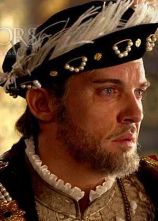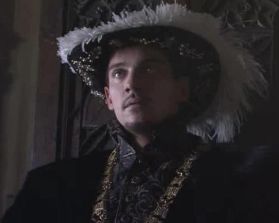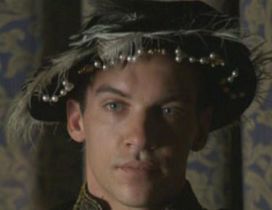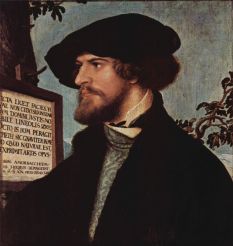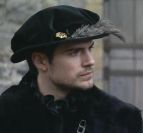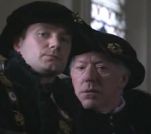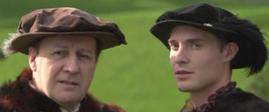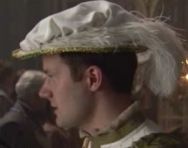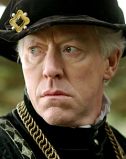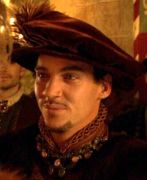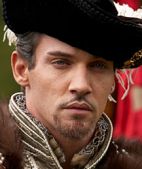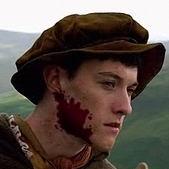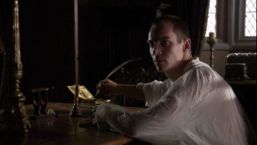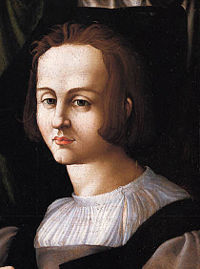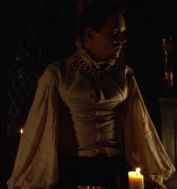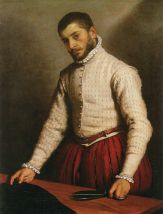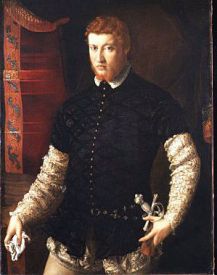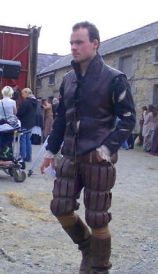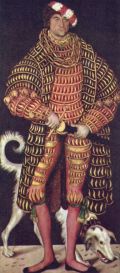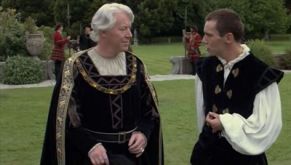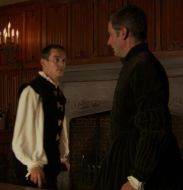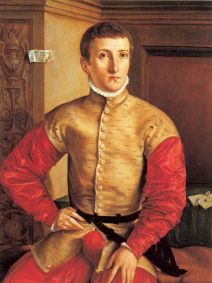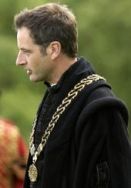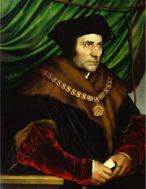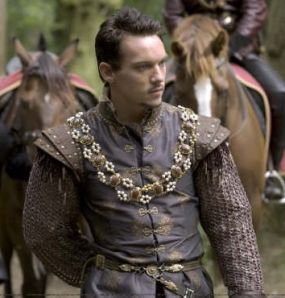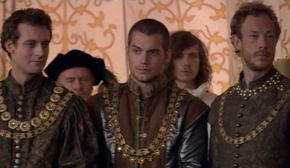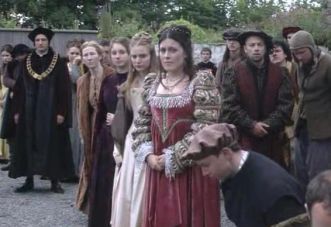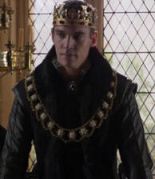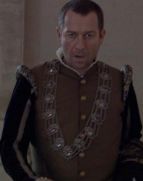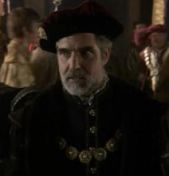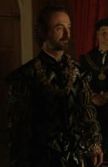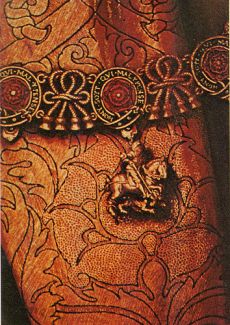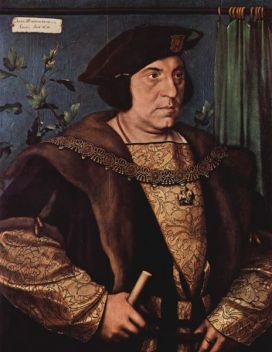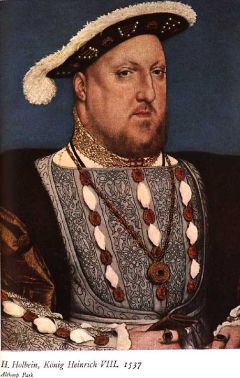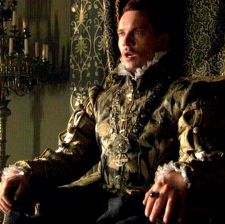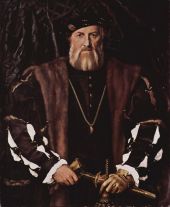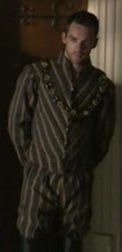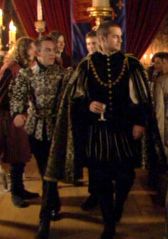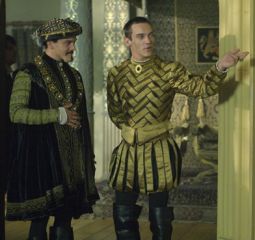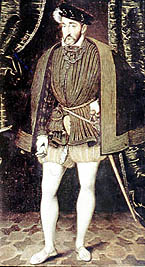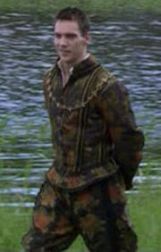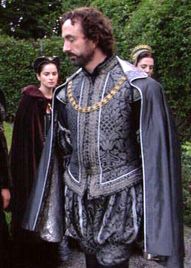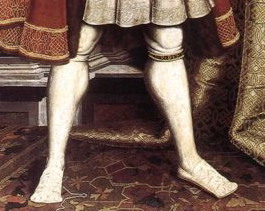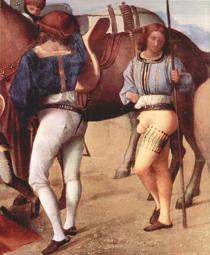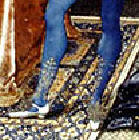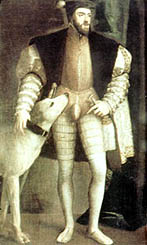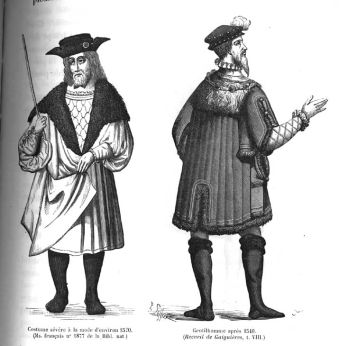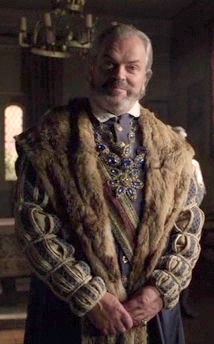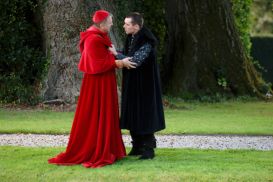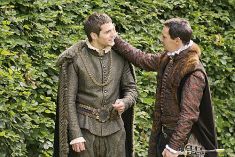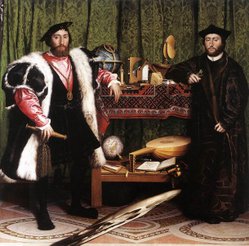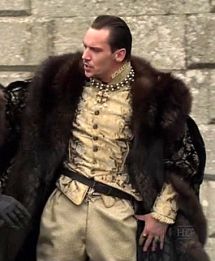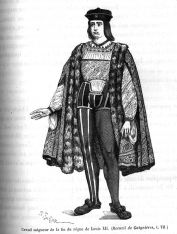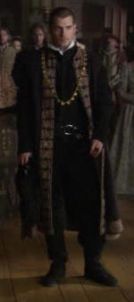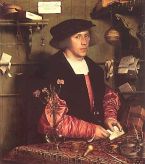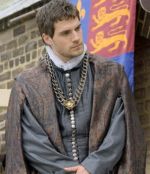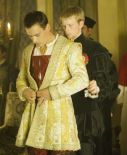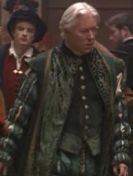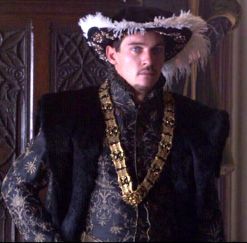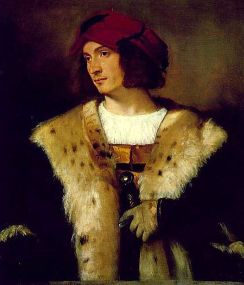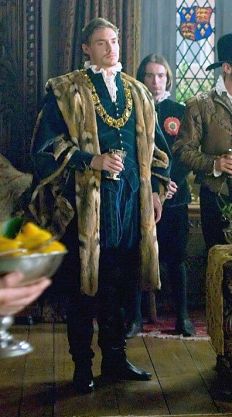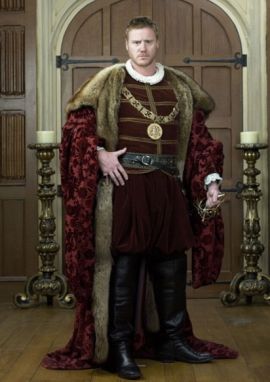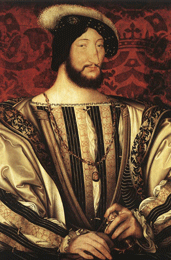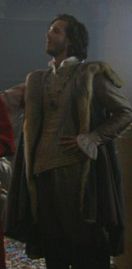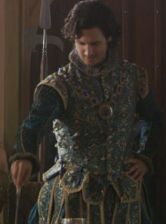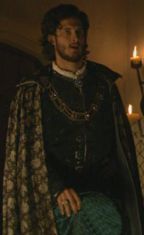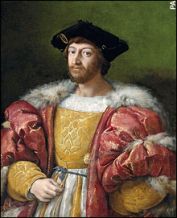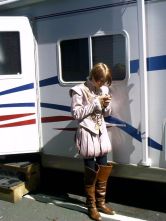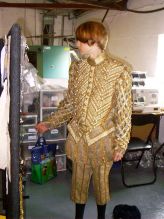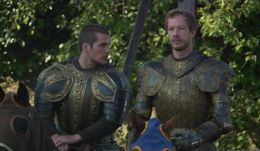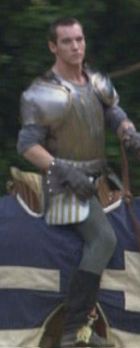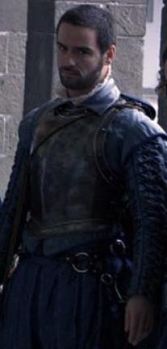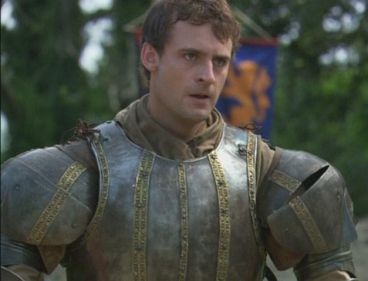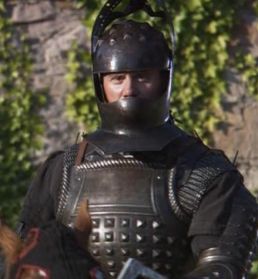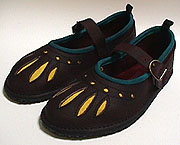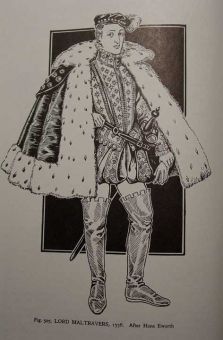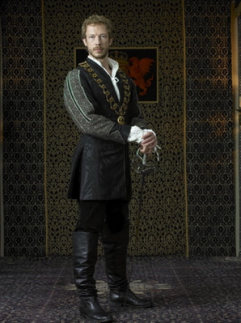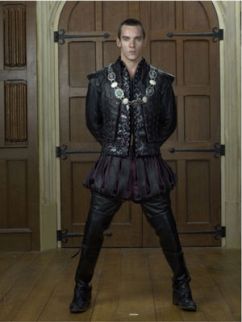The Tudors Costumes : Men's Dress
Jump to navigation
Jump to search
| TUDOR STYLE : Men's Dress |
| Men's clothing gave them a square shape. They wore short doublets over their hose and the shoulders of their coats were cut wide. It was fashionable for their sleeves to be slashed and their flat hats were often decorated with feathers. Most men's hair was bobbed, but the length of your hair was chosen by individual taste. They could be straight or curled according to the nature of the wearer. As the 16th century advanced, men wore their hair shorter almost like modern hair. The men wore variations of the low-crowned, brimmed cap and was often turned up all around or with just one side turned up. The changes in the male silhouette outside of Italy during the 16th century can be summed up under three broad categories:
|
| ||||||||||||||||||||||||||||||||||||||||||
| Armour : Kris Holden-Reid (Compton) said the jousting scenes were fun, "besides the armour that was made for the series was aluminum, not very heavy at all" | ||||||||||||||||||||||||||||||||||||||||||
| Shoes: Although the series shows the men in mostly long boots, really long boots giving support and protection to ankles and legs were not in common use before the mid 17th century, when heel-making techniques had made progress. For centuries, shoes had been on two types of lasts. The earlier, metal last was roughly the shape of the human foot, and possibly Roman in origin, and was used as an anvil to rivet iron hobnails into the leather. The second last was made of wood, and was a form which determined the precise size and shape of the upper, which was then stitched together on it. No lasts were used for the soft leather turn-shoes which were in use from early mediaeval times until the 16th century, but shaping lasts had been essential to hold and form welted shoes during stitching from the 14th century onward. While there was little difference in kind between men's and women's shoes up to the early 17th century, although they had by then become more stylish, the left and right shoes formed mirror images of each other. The development of heels created enormous problems in producing shaped wooden lasts which were accurate enough to give sufficient strength to the shoe for the heel to be mounted on it. The simple turnshoe remained as a less expensive alternative for laborers, sailors, and other common folk. Nobility, on the other hand, went from ridiculously long pointed shoes to ridiculously broad shoes, called Duck's Bill, Scarpine, or Bear's Paw shoes. Modern examples of Duck's bill shoes These shoes were often as much as 12 inches across with uppers made from silk, brocade or velvet. They were heavily decorated with embroidery, padding and were often fur lined with slits in the upper to show off the wearer's colored hose or the lining of the shoe. This fashion passed into a desire for high-fronted shoes with bulging toes. Colored hose were all the rage for men and the shoe was the ideal way to display them. Men's shoes were closed at the ankle with rounded toes and uppers that were slashed diagonally. The style was popular for about a hundred years until Queen Mary (aka Bloody Mary) passed sumptuary laws limiting the breadth of shoes. Slimmer shapes replaced the Duck's Bill shoes and the T strap was introduced in the 16th century. It was during the reign of Elizabeth I that platform shoes and high heels came into vogue. | ||||||||||||||||||||||||||||||||||||||||||
| Boots: The boots the men wear in the series are closer to the style worn in the later part of the 16th century. From "Tudor Costume & Fashion" by Herbert Norris. Lord Maltravers from a portrait dated 1556 |
